- A List of Writing Contests in 2022 | Exciting Prizes!
- Em Dash vs. En Dash vs. Hyphen: When to Use Which
- Book Proofreading 101: The Beginner’s Guide
- Screenplay Editing: Importance, Cost, & Self-Editing Tips
- Screenplay Proofreading: Importance, Process, & Cost
- Script Proofreading: Rates, Process, & Proofreading Tips
- Manuscript Proofreading | Definition, Process & Standard Rates
- Tips to Write Better if English Is Your Second Language
- Novel Proofreading | Definition, Significance & Standard Rates
- Top 10 Must-Try Writing Prompt Generators in 2024
- 100+ Creative Writing Prompts for Masterful Storytelling
- Top 10 eBook Creator Tools in 2024: Free & Paid
- 50 Timeless and Unforgettable Book Covers of All Time
- What Is Flash Fiction? Definition, Examples & Types
- 80 Enchanting Christmas Writing Prompts for Your Next Story
- Your Guide to the Best eBook Readers in 2024
- Top 10 Book Review Clubs of 2025 to Share Literary Insights
- 2024’s Top 10 Self-Help Books for Better Living
- Writing Contests 2023: Cash Prizes, Free Entries, & More!
- What Is a Book Teaser and How to Write It: Tips and Examples
- Audiobook vs. EBook vs. Paperback in 2024: (Pros & Cons)
- How to Get a Literary Agent in 2024: The Complete Guide
- Alpha Readers: Where to Find Them and Alpha vs. Beta Readers
- Author Branding 101: How to Build a Powerful Author Brand
- A Guide on How to Write a Book Synopsis: Steps and Examples
- How to Write a Book Review (Meaning, Tips & Examples)
- 50 Best Literary Agents in the USA for Authors in 2024
- Building an Author Website: The Ultimate Guide with Examples
- Top 10 Paraphrasing Tools for All (Free & Paid)
- Top 10 Book Editing Software in 2024 (Free & Paid)
- What Are Large Language Models and How They Work: Explained!
- Top 10 Hardcover Book Printing Services [Best of 2024]
- 2024’s Top 10 Setting Generators to Create Unique Settings
- Different Types of Characters in Stories That Steal the Show
- Top 10 Screenplay & Scriptwriting Software (Free & Paid)
- 10 Best AI Text Generators of 2024: Pros, Cons, and Prices
- Top 10 Must-Try Character Name Generators in 2024
- 10 Best AI Text Summarizers in 2024 (Free & Paid)
- 2024’s 10 Best Punctuation Checkers for Error-Free Text
- Top 10 AI Rewriters for Perfect Text in 2024 (Free & Paid)
- 11 Best Story Structures for Writers (+ Examples!)
- How to Write a Book with AI in 2024 (Free & Paid Tools)
- Writing Contests 2024: Cash Prizes & Free Entries!
- Patchwork Plagiarism: Definition, Types, & Examples
- 15 Powerful Writing Techniques for Authors in 2024
- Simple Resume Formats for Maximum Impact With Samples
- What Is a Complement in a Sentence? (Meaning, Types & Examples)
- What are Clauses? Definition, Meaning, Types, and Examples
- Persuasive Writing Guide: Techniques & Examples
- How to Paraphrase a Text (Examples + 10 Strategies!)
- Generative AI: Types, Impact, Advantages, Disadvantages
- A Simple Proofreading Checklist to Catch Every Mistake
- Top 10 AI Resume Checkers for Job Seekers (Free & Paid)
- 20 Best Comic Book Covers of All Time!
- How to Edit a Book: A Practical Guide with 7 Easy Steps
- How to Write an Autobiography (7 Amazing Strategies!)
- How to Publish a Comic Book: Nine Steps & Publishing Costs
- Passive and Active Voice (Meaning, Examples & Uses)
- How to Publish a Short Story & Best Publishing Platforms
- What Is Expository Writing? Types, Examples, & 10 Tips
- 10 Best Introduction Generators (Includes Free AI Tools!)
- Creative Writing: A Beginner’s Guide to Get Started
- How to Sell Books Online (Steps, Best Platforms & Tools)
- Top 10 Book Promotion Services for Authors (2025)
- 15 Different Types of Poems: Examples & Insight into Poetic Styles
- 25 Figures of Speech Simplified: Definitions and Examples
- 10 Best Book Writing Apps for Writers 2025: Free & Paid!
- Top 10 AI Humanizers of 2025 [Free & Paid Tools]
- Top 101 Bone-Chilling Horror Writing Prompts
- How to Write a Poem: Step-by-Step Guide to Writing Poetry
- Top 10 Book Writing Software, Websites, and Tools in 2025
- 100+ Amazing Short Story Ideas to Craft Unforgettable Stories
- The Top 10 Literary Devices: Definitions & Examples
- Top 10 AI Translators for High-Quality Translation in 2025
- Top 10 AI Tools for Research in 2025 (Fast & Efficient!)
- 50 Best Essay Prompts for College Students in 2025
- Top 10 Book Distribution Services for Authors in 2025
- Best 101 Greatest Fictional Characters of All Time
- Top 10 Book Title Generators of 2025
- Best Fonts and Sizes for Books: A Complete Guide
- What Is an Adjective? Definition, Usage & Examples
- How to Track Changes in Google Docs: A 7-Step Guide
- Best Book Review Sites of 2025: Top 10 Picks
- Parts of a Book: A Practical, Easy-to-Understand Guide
- What Is an Anthology? Meaning, Types, & Anthology Examples
- How to Write a Book Report | Steps, Examples & Free Template
- 10 Best Plot Generators for Engaging Storytelling in 2025
- 30 Powerful Poems About Life to Inspire and Uplift You
- What Is a Poem? Poetry Definition, Elements, & Examples
- Metonymy: Definition, Examples, and How to Use It In Writing
- How to Write a CV with AI in 9 Steps (+ AI CV Builders)
- What Is an Adverb? Definition, Types, & Practical Examples
- How to Create the Perfect Book Trailer for Free
- Top 10 Book Publishing Companies in 2025
- 14 Punctuation Marks: A Guide on How to Use with Examples!
- Translation Services: Top 10 Professional Translators (2025)
- 10 Best Free Online Grammar Checkers: Features and Ratings
- 30 Popular Children’s Books Teachers Recommend in 2025
- 10 Best Photobook Makers of 2025 We Tested This Year
- Top 10 Book Marketing Services of 2025: Features and Costs
- Top 10 Book Printing Services for Authors in 2025
- 10 Best AI Detector Tools in 2025
- Writing Contests 2025: Cash Prizes, Free Entries, and More!
- Audiobook Marketing Guide: Best Strategies, Tools & Ideas
- 10 Best AI Writing Assistants of 2025 (Features + Pricing)
- What is a Book Copyright Page?
- Final Checklist: Is My Article Ready for Submitting to Journals?
- 8 Pre-Publishing Steps to Self-Publish Your Book
- 7 Essential Elements of a Book Cover Design
- How to Copyright Your Book in the US, UK, & India
- Beta Readers: Why You Should Know About Them in 2024
- How to Publish a Book in 2024: Essential Tips for Beginners
- ISBN Guide 2024: What Is an ISBN and How to Get an ISBN
- Book Cover Design Basics: Tips & Best Book Cover Ideas
- Why and How to Use an Author Pen Name: Guide for Authors
- How to Format a Book in 2025: 7 Tips for Book Formatting
- What is Manuscript Critique? Benefits, Process, & Cost
- 10 Best Ghostwriting Services for Authors in 2025
- How to Hire a Book Editor in 5 Practical Steps
- Self-Publishing Options for Writers
- How to Promote Your Book Using a Goodreads Author Page
- 7 Essential Elements of a Book Cover Design
- What Makes Typesetting a Pre-Publishing Essential for Every Author?
- 4 Online Publishing Platforms To Boost Your Readership
- Typesetting: An Introduction
- Quick Guide to Novel Editing (with a Self-Editing Checklist)
- Self-Publishing vs. Traditional Publishing: 2024 Guide
- How to Publish a Book in 2024: Essential Tips for Beginners
- ISBN Guide 2024: What Is an ISBN and How to Get an ISBN
- How to Publish a Book on Amazon: 8 Easy Steps [2024 Update]
- What are Print-on-Demand Books? Cost and Process in 2024
- What Are the Standard Book Sizes for Publishing Your Book?
- How to Market Your Book on Amazon to Maximize Sales in 2024
- Top 10 Hardcover Book Printing Services [Best of 2024]
- How to Find an Editor for Your Book in 8 Steps (+ Costs!)
- What Is Amazon Self-Publishing? Pros, Cons & Key Insights
- Manuscript Editing in 2024: Elevating Your Writing for Success
- Know Everything About How to Make an Audiobook
- A Simple 14-Point Self-Publishing Checklist for Authors
- How to Write an Engaging Author Bio: Tips and Examples
- Book Cover Design Basics: Tips & Best Book Cover Ideas
- How to Publish a Comic Book: Nine Steps & Publishing Costs
- Why and How to Use an Author Pen Name: Guide for Authors
- How to Sell Books Online (Steps, Best Platforms & Tools)
- A Simple Guide to Select the Best Self-Publishing Websites
- 10 Best Book Cover Design Services of 2025: Price & Ratings
- How Much Does It Cost to Self-Publish a Book in 2025?
- How to Self-Publish a Book: Tips and Prices (2025)
- Quick Guide to Book Editing [Complete Process & Standard Rates]
- How to Distinguish Between Genuine and Fake Literary Agents
- What is Self-Publishing? Everything You Need to Know
- How to Copyright a Book in 2025 (Costs + Free Template)
- The Best eBook Conversion Services of 2025: Top 10 Picks
- 10 Best Self-Publishing Companies of 2025: Price & Royalties
- 10 Best Photobook Makers of 2025 We Tested This Year
- How to start your own online publishing company?
- 8 Tips To Write Appealing Query Letters
- Self-Publishing vs. Traditional Publishing: 2024 Guide
- How to Publish a Book in 2024: Essential Tips for Beginners
- ISBN Guide 2024: What Is an ISBN and How to Get an ISBN
- What are Print-on-Demand Books? Cost and Process in 2024
- How to Write a Query Letter (Examples + Free Template)
- Third-person Point of View: Definition, Types, Examples
- How to Write an Engaging Author Bio: Tips and Examples
- How to Publish a Comic Book: Nine Steps & Publishing Costs
- Top 10 Book Publishing Companies in 2025
- 10 Best Photobook Makers of 2025 We Tested This Year
- How to Create Depth in Characters
- Starting Your Book With a Bang: Ways to Catch Readers’ Attention
- Research for Fiction Writers: A Complete Guide
- Short stories: Do’s and don’ts
- How to Write Dialogue: 7 Rules, 5 Tips & 65 Examples
- What Are Foil and Stock Characters? Easy Examples from Harry Potter
- How To Write Better Letters In Your Novel
- On Being Tense About Tense: What Verb Tense To Write Your Novel In
- How To Create A Stellar Plot Outline
- How to Punctuate Dialogue in Fiction
- On Being Tense about Tense: Present Tense Narratives in Novels
- The Essential Guide to Worldbuilding [from Book Editors]
- What Is Point of View? Definition, Types, & Examples in Writing
- How to Create Powerful Conflict in Your Story | Useful Examples
- How to Write a Book: A Step-by-Step Guide
- How to Write a Short Story in 6 Simple Steps
- How to Write a Novel: 8 Steps to Help You Start Writing
- What Is a Stock Character? 150 Examples from 5 Genres
- Joseph Campbell’s Hero’s Journey: Worksheet & Examples
- Novel Outline: A Proven Blueprint [+ Free Template!]
- Character Development: 7-Step Guide for Writers
- What Is NaNoWriMo? Top 7 Tips to Ace the Writing Marathon
- What Is the Setting of a Story? Meaning + 7 Expert Tips
- Theme of a Story | Meaning, Common Themes & Examples
- What Is a Blurb? Meaning, Examples & 10 Expert Tips
- What Is Show, Don’t Tell? (Meaning, Examples & 6 Tips)
- How to Write a Book Summary: Example, Tips, & Bonus Section
- How to Write a Book Description (Examples + Free Template)
- 10 Best Free AI Resume Builders to Create the Perfect CV
- A Complete Guide on How to Use ChatGPT to Write a Resume
- 10 Best AI Writer Tools Every Writer Should Know About
- How to Write a Book Title (15 Expert Tips + Examples)
- 100 Novel and Book Ideas to Start Your Book Writing Journey
- Exploring Writing Styles: Meaning, Types, and Examples
- Mastering Professional Email Writing: Steps, Tips & Examples
- How to Write a Screenplay: Expert Tips, Steps, and Examples
- Business Proposal Guide: How to Write, Examples and Template
- Different Types of Resumes: Explained with Tips and Examples
- How to Create a Memorable Protagonist (7 Expert Tips)
- How to Write an Antagonist (Examples & 7 Expert Tips)
- Writing for the Web: 7 Expert Tips for Web Content Writing
- 10 Best AI Text Generators of 2024: Pros, Cons, and Prices
- What are the Parts of a Sentence? An Easy-to-Learn Guide
- How to Avoid AI Detection in 2024 (6 Proven Techniques!)
- How to Avoid Plagiarism in 2024 (10 Effective Strategies!)
- What Is Climax Of A Story & How To Craft A Gripping Climax
- What Is a Subject of a Sentence? Meaning, Examples & Types
- Object of a Sentence: Your Comprehensive Guide
- What Is First-Person Point of View? Tips & Practical Examples
- Second-person Point of View: What Is It and Examples
- 10 Best AI Essay Outline Generators of 2024
- Third-person Point of View: Definition, Types, Examples
- The Importance of Proofreading: A Comprehensive Overview
- Patchwork Plagiarism: Definition, Types, & Examples
- Simple Resume Formats for Maximum Impact With Samples
- The Ultimate Guide to Phrases In English – Types & Examples
- Modifiers: Definition, Meaning, Types, and Examples
- What are Clauses? Definition, Meaning, Types, and Examples
- Persuasive Writing Guide: Techniques & Examples
- What Is a Simile? Meaning, Examples & How to Use Similes
- Mastering Metaphors: Definition, Types, and Examples
- Generative AI: Types, Impact, Advantages, Disadvantages
- How to Publish a Comic Book: Nine Steps & Publishing Costs
- Essential Grammar Rules: Master Basic & Advanced Writing Skills
- Benefits of Using an AI Writing Generator for Editing
- Hyperbole in Writing: Definition and Examples
- 15 Best ATS-Friendly ChatGPT Prompts for Resumes in 2025
- How to Write a Novel in Past Tense? 3 Steps & Examples
- 10 Best Spell Checkers of 2025: Features, Accuracy & Ranking
- Foil Character: Definition, History, & Examples
- 5 Key Elements of a Short Story: Essential Tips for Writers
- How to Write a Children’s Book: An Easy Step-by-Step Guide
- How To Write a Murder Mystery Story
- What Is an Adjective? Definition, Usage & Examples
- Metonymy: Definition, Examples, and How to Use It In Writing
- Fourth-Person Point of View: A Unique Narrative Guide
- How to Write a CV with AI in 9 Steps (+ AI CV Builders)
- What Is an Adverb? Definition, Types, & Practical Examples
- How to Write A Legal Document in 6 Easy Steps
- 10 Best AI Story Generators in 2025: Write Captivating Tales
- How to Introduce a Character Effectively
- What is Rhetoric and How to Use It in Your Writing
- How to Write a Powerful Plot in 12 Steps
- How to Make Money as a Writer: Your First $1,000 Guide
- How to Write SEO Content: Tips for SEO-Optimized Content
- Types of Introductions and Examples
- How to Create Marketing Material
- What is a Cliffhanger? Definition, Examples, & Writing Tips
- How to Write Cliffhangers that Keep Readers Hooked!
- How to Write a Romance Novel: Step-by-Step Guide
- Top 10 Writing Tips from Famous Authors
- 10 Best Ghostwriting Services for Authors in 2025
- What is Ghostwriting? Meaning and Examples
- How to Become a Ghostwriter: Complete Career Guide
- How to Write a Speech that Inspires (With Examples)
- 10 Best AI Writing Assistants of 2025 (Features + Pricing)
Still have questions? Leave a comment

Checklist: Dissertation Proposal
Enter your email id to get the downloadable right in your inbox!
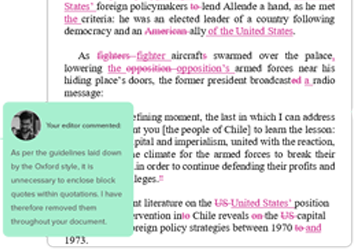
Examples: Edited Papers
Enter your email id to get the downloadable right in your inbox!
Need
Editing and
Proofreading Services?

5 Key Elements of a Short Story: Essential Tips for Writers
 Apr 28, 2025
Apr 28, 2025 5
min read
5
min read
- Tags: Fiction Writing, Short Story, Writing Tips
Writers like Anton Chekhov, O. Henry, Alice Munro, and Tobias Wolff are all big names in the short story genre. Ever wonder how these writers craft such remarkable stories? They are the true masters at combining the five elements of a short story: plot, character, setting, conflict, and theme.
These five elements make short stories the best starting point for novice writers. They’re short and fairly simple, so the writer can focus on the plot, character, and theme. Short stories also allow writers to see their writing flourish as a piece of fiction— a great confidence boost! Additionally, short stories serve as an excellent training ground for new writers, helping them develop unique skills and methods specific to this literary form.
If you wish to write stories worth publishing, you must understand the characteristics of a short story. To help you get there, we have shared these five short story elements in this blog.
How do the five elements of a short story work? How can you naturally include them in your stories? Also, how can you tie them up to create one coherent narrative?
What are short stories?
A short story is a brief narrative that typically has a specific goal or theme. Unlike novels, which have the luxury of time and space to develop intricate plots and subplots, short stories must convey their message quickly and efficiently. This brevity often results in a more intense and focused narrative, making every word count. The key elements of a short story—characters, conflict, and themes—must be introduced and developed within a limited word count, often between 5,000 and 10,000 words
Here are the five key elements of a short story:
- Plot
- Character
- Setting
- Conflict
- Theme
Let’s take a closer look at these elements and figure out how you should use them in a short story.
Five key elements of a short story
1. Plot
A simple way to define a plot is to call it a sequence of events in your narrative. It is a cause-and-effect chain of events with a beginning point, a climax, and a resolution. A strong plot means you have a captivating narrative ready to enthrall your audience.
Writers use the plot to map their stories before beginning their writing process. For fiction writing, this serves as a creative outline. So, understanding the plot is crucial to crafting a compelling narrative and making it impactful.
The sequence of events in a plot is tied to the central conflict in a story. The plot develops as the protagonist struggles with their given problem, driven by the characters’ goals, finds a solution, and eventually accepts the results.
Six succinct stages of a plot
1. Exposition: An introduction to the characters, setting, and conflict, providing all the necessary background information of a story.
2. Opening incident: This is the incident that leads the main character to conflict and sets the stage for or opens the plot.
3. Rising action: The conflict develops and brings newer and more complicated incidents, leading to the climax.
4. Climax: The conflict reaches a peak, which then leads to a change in the course of events, giving the reader a new understanding of the story either through an event or an insight. The climax often revolves around the major conflict the protagonist must confront.
5. Falling action: The conflict gets resolved, and the action slows down.
6. Resolution: The conflict ends, leaving the reader fulfilled.
Plot as a short story element
Often, plots in short stories are simple but end up delivering great suspense, followed by a grand moment of revelation. For this reason alone, the plot was once considered the most important of all the five elements of a short story.It means it was seen as the key element of a short story.
Modern short stories, however, are often focused on the nuances of character and setting, so the plot becomes secondary. Nevertheless, a plot is the spine of any given narrative, so it still features first in our study of the short story elements!
Your prime goal as a writer of short stories is to blow your readers’ minds, keeping them engaged with the least words possible. An ideal short story is between 5,000–10,000 words long. You must keep it short and creatively blunt.
Every paragraph, every sentence, and every word should lead the reader closer to the climax. Cut anything that doesn’t serve this purpose. Short stories give you a very small space to work with, so brevity becomes important. Hence, planning your short story structure well matters! Sometimes, the resolution of a short story can introduce a new conflict or question for the reader, leading to further engagement.
Some techniques to add more kick to your story are creating suspense, foreshadowing, narrating flashbacks, and a short story staple, the surprise ending.
2. Character
Your characters are the people, animals, or other figures who appear in your stories. They perform actions and say dialogue to move the story along. A story cannot be told without main characters, as they are crucial in driving the narrative and engaging the readers.
Depending on how you see it, a character can be classified as either round or flat, dynamic or static, a protagonist or an antagonist. For a short story, well-rounded and dynamic characters will be your strength.
The easiest way to write interesting characters is to make sure that they have a flaw. Internal conflicts, such as doubt and fear, can serve as significant obstacles for characters. Always keep in mind that in any story, perfect characters fall flat.
Writing characters for short stories
Be careful that you don’t put too much emphasis on character traits and backstory. Unlike novels, characters in a short story are only glimpsed at, rather than seen in the round.
You may say that the characteristics of a short story are abbreviated versions of the same in novels. So, short stories will feature only two or three major characters, while novels can boast a dozen!
Short stories can be great character studies, but a good rule of thumb is to focus on dialogue and action. A deeper understanding of human nature can inform how characters evolve in short stories.
Make the interaction between the characters dynamic. This includes what they do and say to each other, how they affect and influence each other, and how the effects of their actions keep the story going toward the climax and the subsequent resolution.
3. Setting
Ever felt transported to another world while reading a short story? That’s the work of a writer who can imagine and write a whole other world into being.
This element of a short story is crucial in making it real to the reader. The setting establishes a time, place, and environment in which the characters and events of the story are based. It also helps explore themes related to the human condition, engaging the reader by delving into complex aspects of life and human interactions.
Aspects of setting:
1. Time: A story is usually set in a time period. This includes the historical time of the story, its specific time frame, and even the time of day when the events take place.
2. Place: Place is the geographical landscape, real or imaginary, where a particular story unfolds.
3. Environment: The environment of a story can include anything from weather conditions to the social, cultural, and political backdrop to a given story. It can also reflect the characters’ internal struggles and human nature, adding depth to their development.
For example, Guy de Maupassant’s short story The Necklace takes place during the 19th century in the city of Paris and has the environmental backdrop of class differences in French society.
Like the main conflict of class difference in The Necklace, all other characteristics of a short story derive from its setting. When well-designed, this can also help set up the dominant emotional tone. Of course, it takes a significant amount of research to deliver a setting both beautifully and believably.
4. Conflict
Conflict is closely linked to the theme of a narrative, as it motivates the characters and affects the plot. It usually surfaces when the protagonist (main character) faces an obstacle or hardship. Conflict forms “the heartbeat of a story”, so your story needs to have a defining conflict, both internal and external, to impact the reader’s mind.
There are two main types of conflict: internal conflict and external conflict. Internal conflicts, such as personal struggles, can hinder characters’ growth and goals.
Types of conflict
1. Internal conflict is a person’s struggle with themselves. It takes place inside the psyche of a character, such as Hamlet’s conflicted state of mind about how to take revenge for his father’s murder.
2. External conflict takes place between different people or groups of people. It is possible to further divide this type of conflict based on who or what the protagonist(s) are struggling against, often involving an antagonist who directly opposes the protagonists’ goals.
For example, the conflict in A Game of Thrones is between kingdoms, but also between people and the supernatural elements of the fantasy world.
Regardless of the type of conflict you choose, making it believable will hold the reader’s attention. Various literary devices like mystery, causality, empathy, surprise, insight, universality, or simply high stakes for the character, all add a different dimension of conflict to the plot. Conflict drives your story and makes it interesting.
5. Theme
A theme is what children would call the moral of the story. It can be the subject of the story, an idea that runs through it, or simply the message that is conveyed from the writer to the reader through the short story. The writer can use all the other characteristics of a short story to best articulate their theme into words. Various story elements contribute to a cohesive narrative, guiding writers on how to effectively conclude their own story.
A well-told story, the kind that gets published or made into a film, explains itself. For example, while reading O. Henry’s short story The Gift of the Magi, you can easily understand that the story is about the value of love and sacrifice. In this way, the theme is implied rather than stated explicitly, and it is up to the writer’s skill to best convey it through their writing.
For a short story, it is usually best to decide on a single, resonant theme and then build around it. This helps maintain brevity in your story and helps you grasp the reader’s attention.
Short story examples
Short stories can be steered in any direction based on a writer’s judgment. It means a writer can explore various narratives, experiment with different ideas, and introduce twists to take readers on a different journey (or, maybe, even a detour).
Let us quickly see some examples of short stories in this section.
The Forgotten Key
Alicia rummaged through the drawer in a frenzy, her fingers trembling with urgency. She could not believe she had lost the key again—the small, silver one that opened the attic door. It wasn’t just any attic; it held her grandmother’s old chest, rumored to contain secrets of their family’s past. Just when she was about to give up, a tiny glint caught her eye beneath a stack of old postcards. She hesitated, pulled the postcards away, and there it was—the key. With a sigh of relief, she grabbed it and hurried upstairs, her heart pounding with anticipation for what she was about to uncover.
The Last Train Home
The station was eerily quiet as Mark sat on the cold, metal bench, his suitcase beside him. The last train of the night was delayed, and the flickering lights above cast unsettling shadows. He could still feel the weight of his decision, leaving everything behind—his job, his city, and even his old friends. As he watched the mist rolling in along the tracks, he wondered if the new life awaiting him would be any different or if he was simply running in circles. The distant horn of the approaching train broke his thoughts, and with a deep breath, he stood up, ready to face whatever lay ahead.
Point of view: Choosing the right narrative for your short story
Selecting the appropriate narrative perspective is a crucial decision while crafting a short story. The point of view (POV) not only shapes the reader’s experience but also influences how the story’s elements—plot, character, setting, conflict, and theme—are perceived and interwoven.
Renowned short story writers like Edgar Allan Poe, Ernest Hemingway, and Alice Munro have mastered the art of choosing the right POV to enhance their storytelling. They have been able to make their narratives both engaging and memorable by mastering the POV.
There are several narrative perspectives to consider, each offering unique advantages and challenges:
- First-person POV: The first-person perspective allows readers to experience the story through the eyes of a character, often the protagonist. It creates intimacy and immediacy, drawing readers into the character’s internal world. However, it can also limit the narrative to the character’s knowledge and biases.
- Second-person POV: Less common in short stories, the second-person perspective addresses the reader directly as “you”, creating an immersive and sometimes disorienting experience. It can be effective for experimental or interactive storytelling but may be challenging to sustain over a longer narrative.
- Third-person POV: It offers a more objective view of the story than other perspectives, allowing the narrator to observe and describe events from outside the characters’ minds. There are two main variations within third-person POV:
-
-
- Third-person omniscient: With this POV, the narrator has unlimited knowledge and can access the thoughts and feelings of multiple characters. This POV provides a broad perspective. It allows the exploration of various viewpoints. However, it can also feel distant or detached, making it challenging to relate to individual characters on a personal level.
- Third-person limited: This narrator focuses on the thoughts and feelings of a single character. It creates a sense of connection and empathy, but it can also limit the reader’s understanding of other characters and events.
-
Writing your first draft
When writing your first draft, it’s essential to have a clear idea of the story’s purpose and message. Start by brainstorming and developing your characters, conflict, and themes. Consider the main character’s goals and motivations, as well as the external conflict that drives the plot. Think about the story’s setting, including the physical location and time period, and how it contributes to the overall atmosphere.
Use first-person pronouns, third-person pronouns, or second-person pronouns to create a unique narrative voice. Each perspective offers different advantages: the first person can provide intimacy, the third person can offer a broader view, and the second person can create an immersive experience. As you write, focus on creating dynamic and interesting characters that will captivate your readers. Ensure that your narrative is compelling and that it draws readers in from the very first sentence.
Common mistakes to avoid
When writing short stories, there are several common mistakes to avoid. One of the most significant errors is failing to create a clear main conflict or internal conflict that drives the plot. Without a strong conflict, the story can feel aimless and unengaging. Another mistake is not developing the main character’s character arcs or neglecting to include supporting characters who add depth and dimension to the narrative.
Avoid using overly complex sentence structures or word choices that may confuse readers. Clarity is key in short fiction. Additionally, be mindful of the story’s tone and atmosphere, ensuring that it aligns with the genre, whether it’s science fiction, supernatural elements, or modern day. Finally, don’t forget to proofread your work carefully to avoid errors in punctuation, grammar, and spelling. A polished story is more likely to captivate and retain readers.
Now that you know how to craft a brilliant short story with the 5 elements of a short story and the 6 stages of a plot, you can experiment and create memorable masterpieces. After you write a short story, the next step is to ensure they are edited well.
If editing is not your strength, consider our story editing services. Editors at PaperTrue will ensure you have a well-structured short story ready for publication in time.
Here are some related articles that you might find interesting:

Tanvi

With a foundation in Life Sciences, Tanvi enjoys curating technical writing tips tailored for ESL students. When she's not translating complex concepts into bite-sized nuggets, she can be found playing with dogs or painting landscapes.
11 comments on “5 Key Elements of a Short Story: Essential Tips for Writers”
Comments are closed.
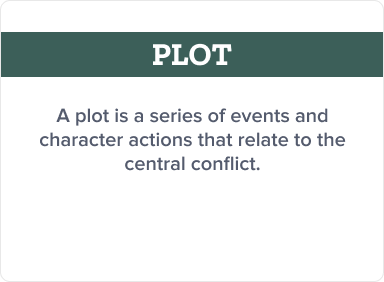
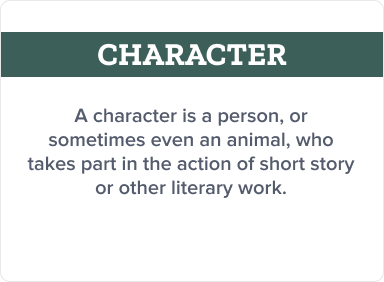
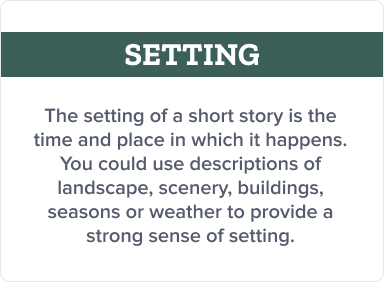
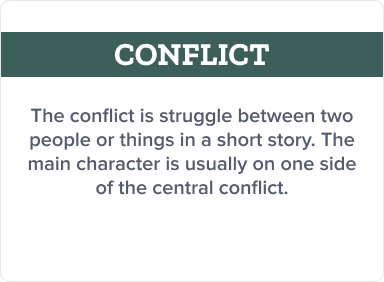
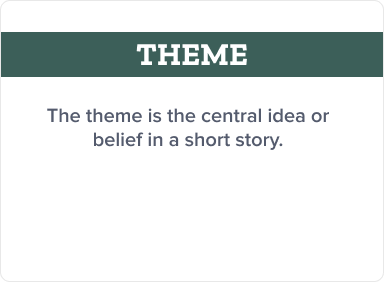


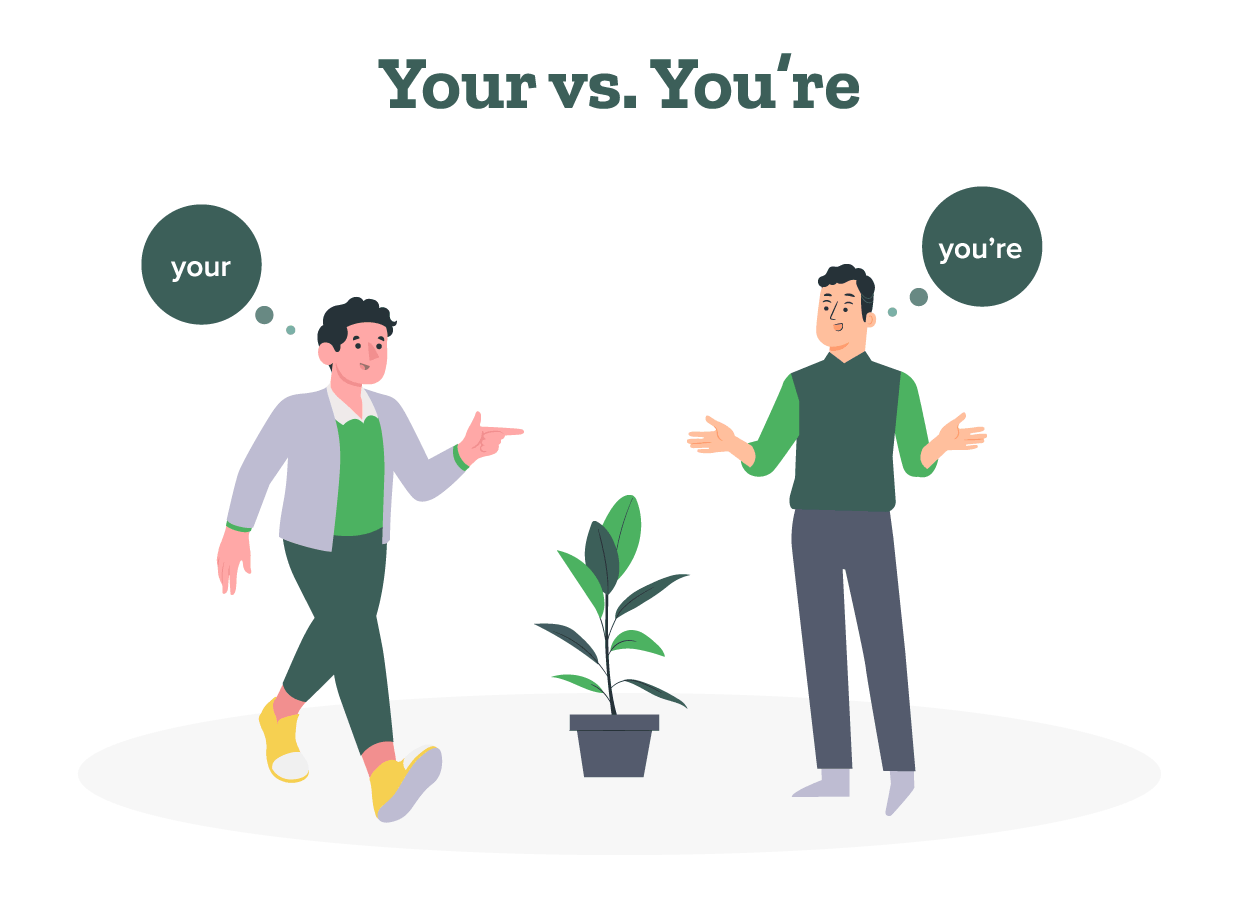
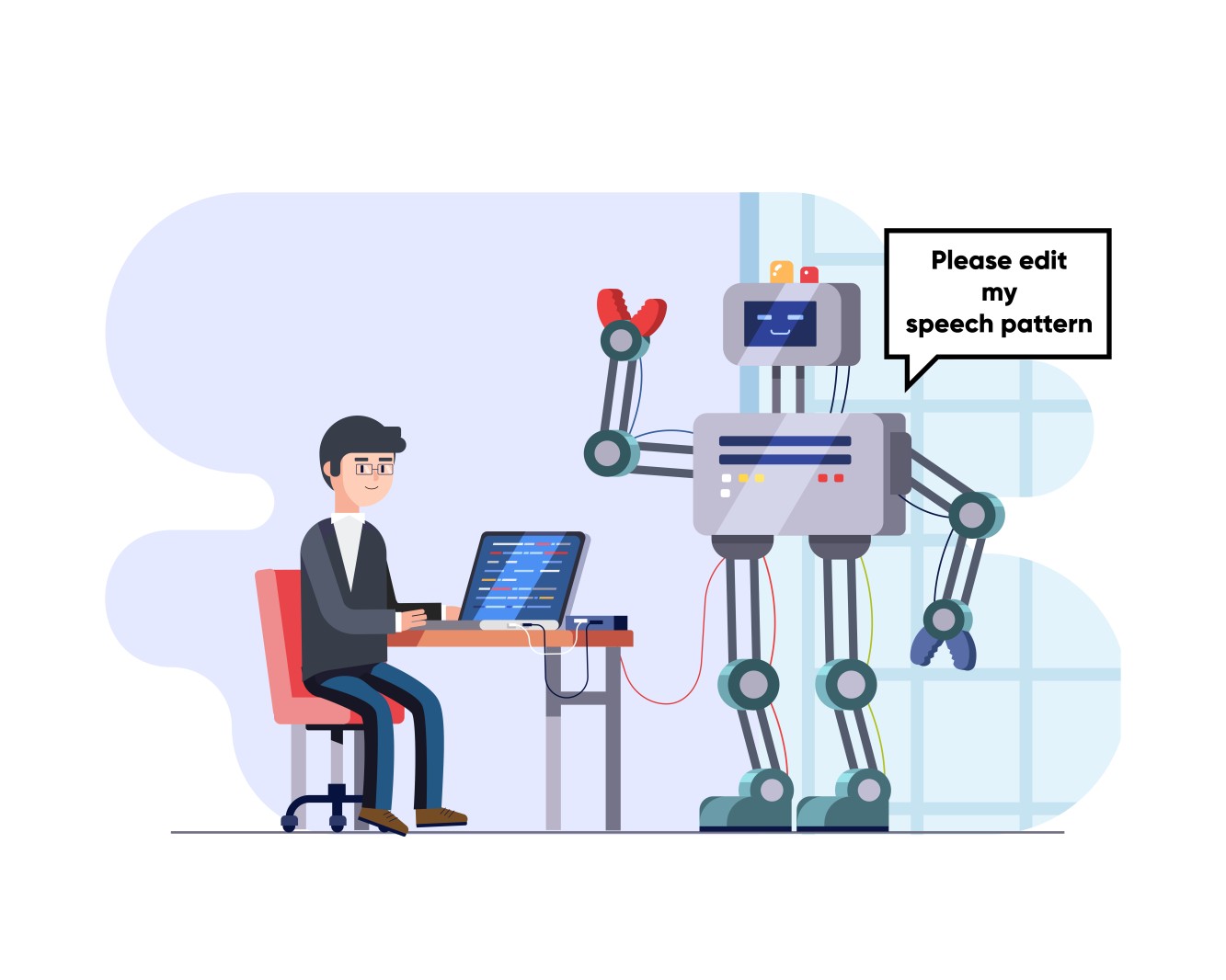
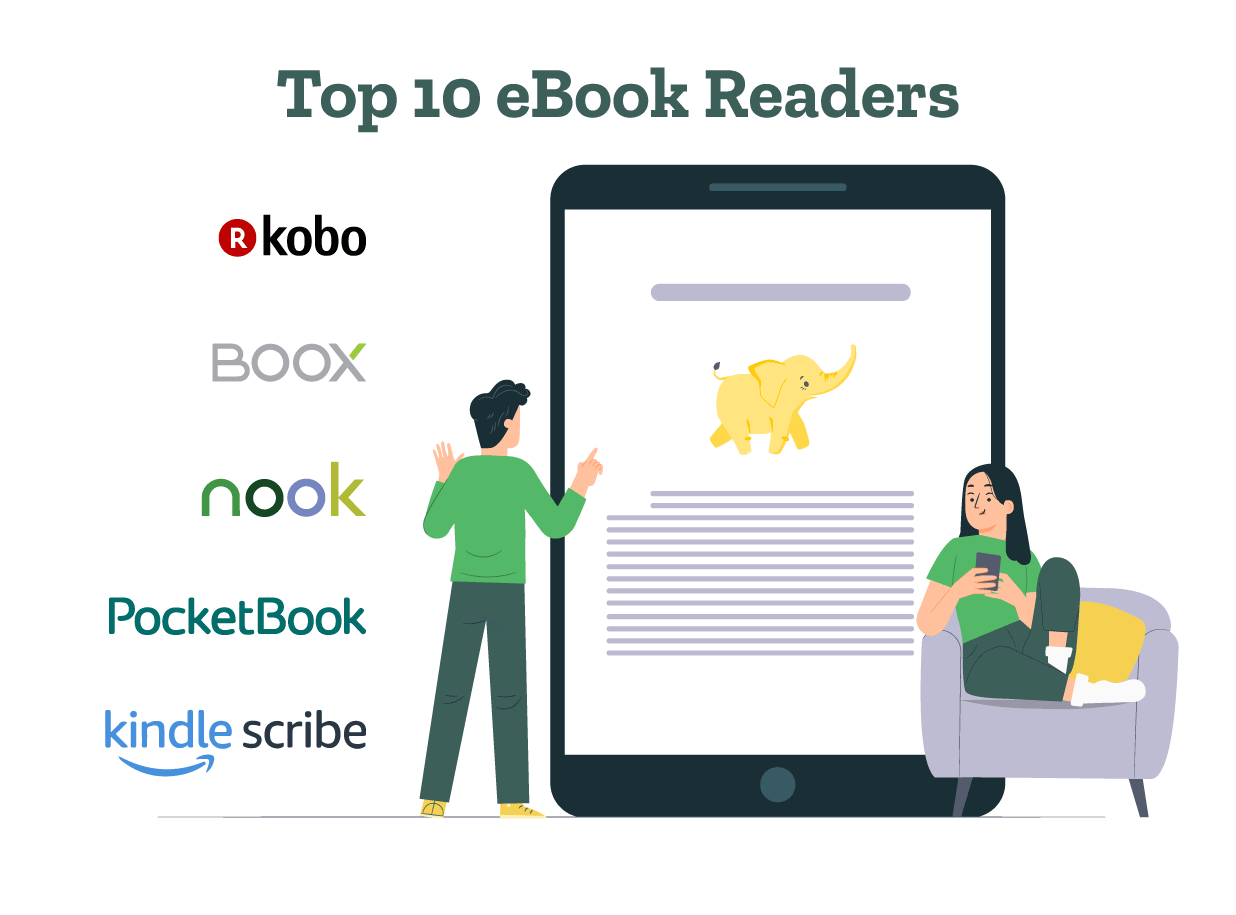
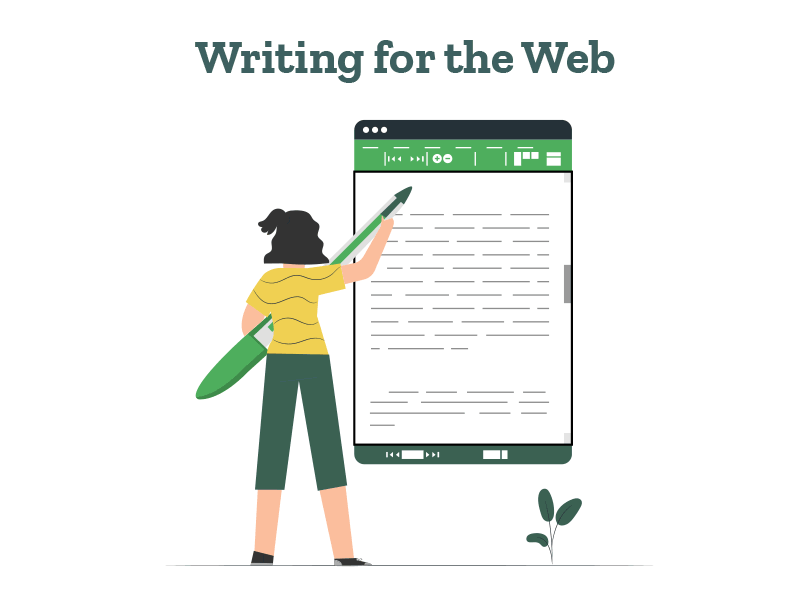
hi, thanks for this useful information on the elements of a story.
A good one. I am a teacher of English, and this is quite informative…
Hi, this article on short story elements is very informative. Thanks!
Thanks
Wow, it’s amazing how you organize the ideas. It’s quite simple and clear. Thank you.
How amazing! This is simple and quite clear.
Helped a lot !
It’s wonderful for all
GOOD
Your information is very useful. Thank you
thank you so much…. the explanation makes me easy to teach creative writing.